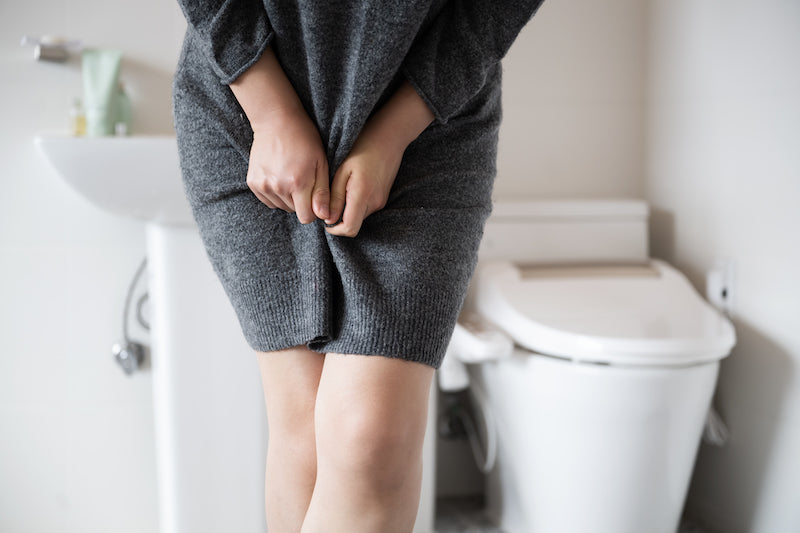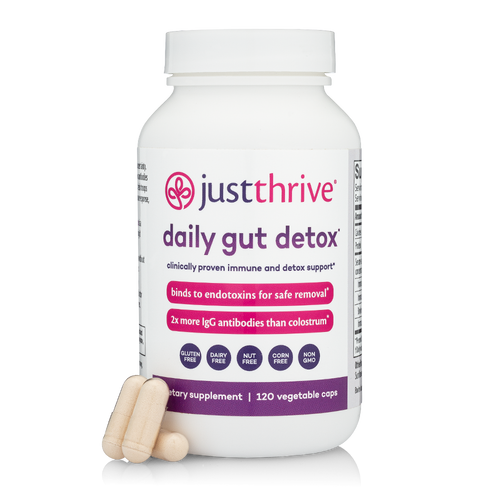How to defeat the REAL cause of UTIs
Here’s the uncomfortable truth: When you go to the doctor with a urinary tract infection (UTI), their first questions will be about your sex life. After all, their party line seems to be that UTIs after sex are “just part of being a woman.”
As many times as you may have heard that, it’s simply not true.
Yes, sex can jumpstart a UTI, but only if it’s already brewing.
When you keep your urinary tract healthy all the time, UTIs won’t be a regular part of your life… even when a healthy sex life is.
What Really Causes UTIs
Sex does not cause UTIs. But it can increase the chance you’ll get one. But you can stay one step ahead of UTIs… if you address the real causes.
UTIs occur when unwanted bacteria get into your bladder and stay there. If they’re allowed to multiply, they can cause infection.
There are 4 things that let UTIs take hold:
- infectious microbes
- anatomy
- pH levels
- adhesion

1. Infectious microbes
Most commonly, E. coli and Candida albicans actually cause UTIs. E. coli causes up to 90% of these frustrating infections.[1] Up to another 10% are caused by Candida albicans overgrowth.[2] Chances are, if you have a UTI it’s caused by E. coli or Candida that traveled to your bladder. Those microbes can transfer over from a partner or from another part of your body, then make their way into your urinary tract.
If your vaginal microbiome is out of balance, a condition called vaginal dysbiosis, E. coli and Candida albicans can dominate.[3] Once they colonize in the vagina, these UTI-causing microbes can travel to your urinary tract and cause big problems.[4]
2. Female anatomy
Due to the structure of women’s anatomy, it’s much easier for bugs like E. coli and Candida albicans to make their way to the urinary tract. Women have short urethras, only about 3 or 4 cm long.[5] So bacteria and fungus that end up near the urethra are dangerously close to the opening of the bladder. It’s easy for those microbes to travel that very short distance, where they can dig in and multiply.
3. pH levels
pH levels make it possible or impossible for infectious microbes to survive. When the pH levels in the vagina and urinary tract are too high, bad bacteria and fungus can grow out of control. The normal vaginal pH is slightly acidic, a level that normally keeps those infectious microbes in check.[6]
4. Adhesion
Adhesion is stickiness, the property that lets infectious microbes attach to the bladder wall and gain strength.[7]
Having sex can’t cause any of these factors, but if they are all in play, having sex can help move infectious microbes into the urethra.
Related Blog
Best Practices Help Prevent UTIs
Even though having sex doesn’t cause UTIs, it can increase the chances that pathogens will make their way into your urethra. Luckily, following sexual hygiene best practices can help make it much less likely that that will happen.
Anything that makes it harder for infectious microbes to get into the urethra can stop a UTI in its tracks. So taking these simple steps can help reduce the risk of developing a UTI after sex:
- Stay hydrated. Drinking keeps more liquid in your bladder, making it harder for microbes to attach.[8]
- Pee immediately after sex. Expelling urine also helps flush out any microbes lingering in your bladder.
- Wipe front to back. This helps prevent moving pathogenic bacteria toward the vagina and urethra.
- Avoid using spermicides. They can cause vaginal dysbiosis, allowing pathogens to colonize.[9]
- Don’t use scented products on your genital area. These can irritate the urethra and increase the risk for UTIs.
All of these steps can help reduce your risk for UTIs.
And you can stay protected by proactively keeping your urinary tract as healthy as possible.
How to Keep Your Urinary Tract Healthy
UTIs are nothing new. And natural healers have been treating them with plant remedies for generations. Because they work.
Plants naturally contain thousands of healthful compounds called phytochemicals. Some that provide nutrients. Some that deliver antioxidants. And some that fight off microbes as a form of self-protection.[10]
If you want to stay ahead of UTIs, you can trust these three plants that people have relied on for centuries.[11]
Cranberry
Women have been counting on cranberries to protect urinary health for centuries. The bright red berries contain a wealth of plant compounds, including some with antimicrobial properties. But for full benefits, juice alone won’t do. For one, many store-bought juices contain tons of added sugar—exactly what you want to avoid since it feeds bad bacteria. Second, it takes the whole berry—juice, skin, flesh, and seeds—to deliver complete urinary tract support.[12]
Whole cranberries contain unique natural compounds called PACs that prevent adhesion, making sure pathogens can’t stick to cells in your bladder and urinary tract.[13] When those microbes can’t grab on, they get flushed out. That keeps your urinary tract safe and healthy.
Hibiscus
Hibiscus has several properties that support optimal urinary tract health. Its acidic properties help keep your urinary tract pH where it needs to be to discourage pathogens. Hibiscus also works effectively as both an antimicrobial and antifungal agent.[14]
In a clinical trial, a hibiscus extract called Ellirose™ soothed occasional urinary tract challenges.[15]
Black Cumin Seed
Black cumin seed rivals the better-known cranberry when it comes to urinary tract protection. It contains a powerful natural compound called TQ (thymoquinone) that has the ability to address potential urinary tract disrupters before they can cause problems. On top of that black cumin seed helps manage Candida albicans, bringing extra proactive protection for urinary health.[16]
Keep Your Urinary Tract Healthy with UT123
A proactive approach to urinary tract health can keep you clear and comfortable no matter what’s going on in your life. Just Thrive UT123 lets you harness the power of proven plants to maximize urinary health.
UT123 is a fast-acting natural formula that contains:
- 500 mg of whole cranberry extract
- 200 mg of hibiscus extract
- 100 mg of black cumin seed extract
>> Protect your urinary tract health today with UT123.
Not sure UT123 will work for you? We understand, and we can help with that.
That’s why EVERY Just Thrive purchase is covered by our Bottom of the Bottle, 100% money back guarantee.
So you can try UT123 to see if it works for you—and we’re confident that it will.
But if for any reason you don’t feel a difference, simply ask for a full product refund. Any time. Even if it’s been 3 months or 3 years… Even if the bottle is empty!
>> Try UT123 100% RISK FREE today, and save 30% on your first month’s subscription with code SUB30.
Sources
- Ejrnæs K. Bacterial characteristics of importance for recurrent urinary tract infections caused by Escherichia coli. Dan Med Bull. 2011;58(4):B4187.
- Gajdács M, Dóczi I, Ábrók M, Lázár A, Burián K. Epidemiology of candiduria and Candida urinary tract infections in inpatients and outpatients: results from a 10-year retrospective survey. Cent European J Urol. 2019;72(2):209-214.
- Stapleton AE. The Vaginal Microbiota and Urinary Tract Infection. Microbiol Spectr. 2016 Dec;4(6):10.1128/microbiolspec.UTI-0025-2016.
- Meštrović T, Matijašić M, Perić M, Čipčić Paljetak H, Barešić A, Verbanac D. The Role of Gut, Vaginal, and Urinary Microbiome in Urinary Tract Infections: From Bench to Bedside. Diagnostics (Basel). 2020 Dec 22;11(1):7.
- Czajkowski K, Broś-Konopielko M, Teliga-Czajkowska J. Urinary tract infection in women. Prz Menopauzalny. 2021 Apr;20(1):40-47.
- Lin YP, Chen WC, Cheng CM, Shen CJ. Vaginal pH Value for Clinical Diagnosis and Treatment of Common Vaginitis. Diagnostics (Basel). 2021 Oct 27;11(11):1996.
- De Man P, Jodal U, Van Kooten C, Svanborg C. Bacterial adherence as a virulence factor in urinary tract infection. APMIS. 1990;98(12):1053-1060. doi:10.1111/j.1699-0463.1990.tb05034.x
- Scott AM, Clark J, Mar CD, Glasziou P. Increased fluid intake to prevent urinary tract infections: systematic review and meta-analysis. Br J Gen Pract. 2020 Feb 27;70(692):e200-e207.
- Fihn SD, Boyko EJ, Normand EH, Chen CL, Grafton JR, Hunt M, Yarbro P, Scholes D, Stergachis A. Association between use of spermicide-coated condoms and Escherichia coli urinary tract infection in young women. Am J Epidemiol. 1996 Sep 1;144(5):512-20.
- Kumar A, P N, Kumar M, Jose A, Tomer V, Oz E, Proestos C, Zeng M, Elobeid T, K S, Oz F. Major Phytochemicals: Recent Advances in Health Benefits and Extraction Method. Molecules. 2023 Jan 16;28(2):887.
- Das S. Natural therapeutics for urinary tract infections-a review. Futur J Pharm Sci. 2020;6(1):64.
- Vostalova J, Vidlar A, Simanek V, Galandakova A, Kosina P, Vacek J, Vrbkova J, Zimmermann BF, Ulrichova J, Student V. Are High Proanthocyanidins Key to Cranberry Efficacy in the Prevention of Recurrent Urinary Tract Infection? Phytother Res. 2015 Oct;29(10):1559-67.
- Kaspar KL, Howell AB, Khoo C. A randomized, double-blind, placebo-controlled trial to assess the bacterial anti-adhesion effects of cranberry extract beverages. Food Funct. 2015;6(4):1212-1217. doi:10.1039/c4fo01018c
- Alshami I, Alharbi AE. Hibiscus sabdariffa extract inhibits in vitro biofilm formation capacity of Candida albicans isolated from recurrent urinary tract infections. Asian Pac J Trop Biomed. 2014 Feb;4(2):104-8.
- Milandri R, et al. Effects of D-Mannose, ElliroseTM and Lactobacillus Plantarum in treatment of urinary tract recurrent infections (rUTIs): A survey of urologists knowledge about its clinical application. Acta Biomed. 2020 Mar 19;91(1):15-20.
- Forouzanfar F, Bazzaz BS, Hosseinzadeh H. Black cumin (Nigella sativa) and its constituent (thymoquinone): a review on antimicrobial effects. Iran J Basic Med Sci. 2014;17(12):929-938.















